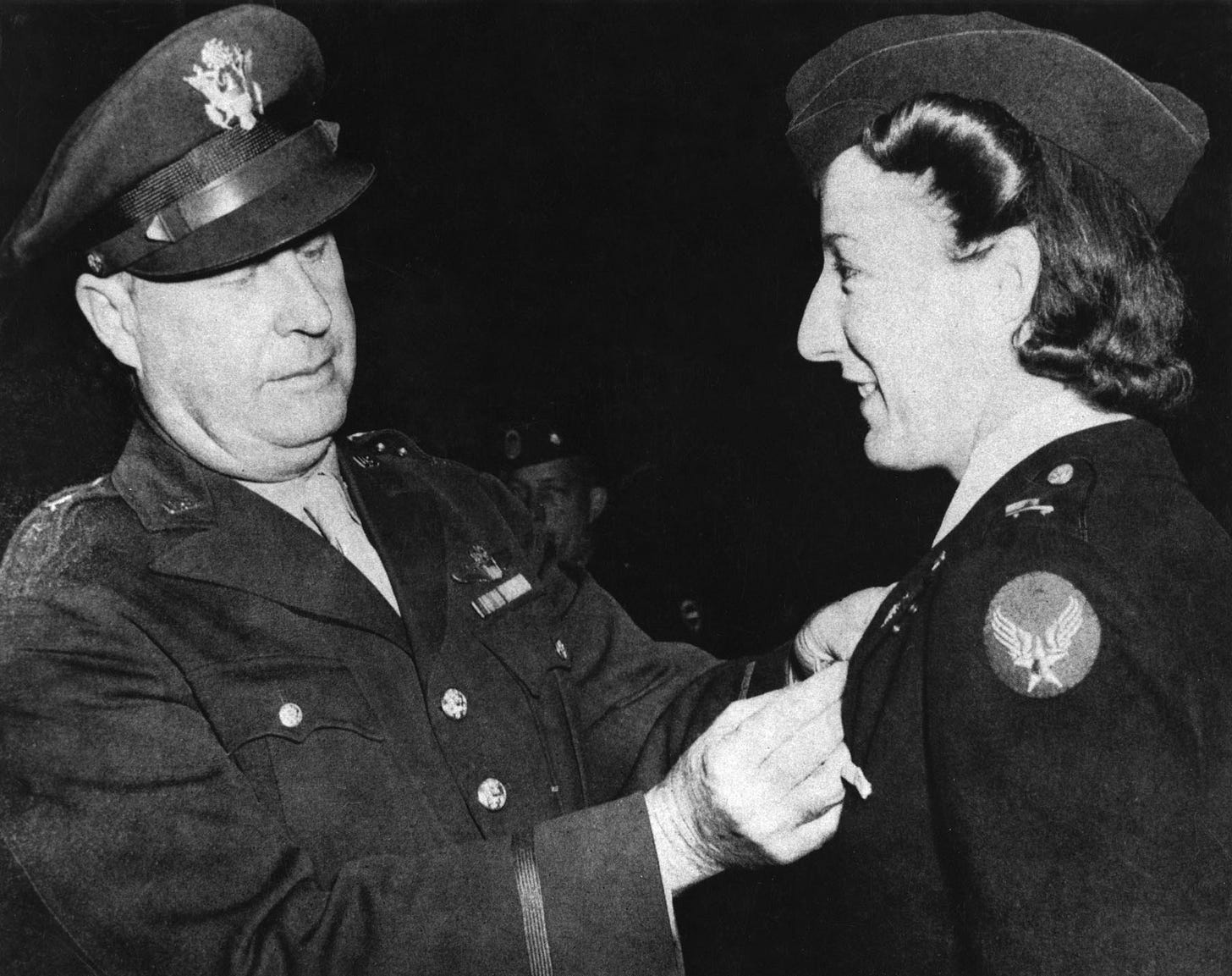TDIH: Second Lt. Elsie Ott
The nurse who made the first intercontinental air evacuation flight had never been on an airplane before she was given such an important task.
On this day in 1943, Second Lieutenant Elsie Ott departs on a grueling trip—the first intercontinental air evacuation flight. Ott was the flight nurse that day, and she would become the first woman to receive the U.S. Air Medal as a result of her service.
Believe it or not, she’d never even flown in a plane before. Where would this country be without brave ladies such as these?
Ott joined the Army Nurse Corps in September 1941, a few months before the attack on Pearl Harbor. After a few brief assignments in the States, she was dispatched to Karachi, India.
Little did she know it, but she was about to make history.
Air evacuations were still in their infancy during World War II. The military was working to train nurses and other medical personnel for these flights, but that training remained incomplete. Instead, necessity would place the untrained Ott on the first intercontinental trip in January 1943.
With mere hours’ notice, Ott was told that she’d be the flight nurse on a trip from India to Walter Reed Hospital in Washington, D.C. She would have five patients: Two were paralyzed from the waist down. Another had tuberculosis, while a fourth had glaucoma. The last patient had manic-depressive psychosis.
Ott gathered blankets and other basic necessities, but the only medical equipment available to her was a simple first aid kit. Armed with these bare provisions, she hopped on the plane. Also on board was a medical tech, but he was still recovering from his own illness.
The plane departed India on January 17, 1943. The trip was longer than you might think. Multiple fuel stops were needed, but these stops served a dual purpose: At each, Ott’s patients were removed from the plane and taken to nearby military hospitals. Once there, the patients could get proper baths, new dressings for wounds, and meals.
Ott was with her patients every step of the way.
Finally, on January 23, the mission came to an end when the plane landed at Bolling Army Air Force Base in Washington, D.C.
Throughout the trip, Ott had taken meticulous notes. She knew that the military would be looking to learn from her trip, and she had recommendations on how planes could be better prepared from a medical standpoint.
Perhaps you won’t be surprised to hear that Ott opted for formal training as a flight nurse once she was back in the States? She was choosing a risky job, though: Planes couldn’t mark themselves as noncombat aircraft if military supplies were aboard. Thus, flight nurses were often in danger from enemy fire, just like any military pilot.
Ott was one of about 500 total flight nurses that served during the course of World War II. These nurses helped to evacuate nearly 1.2 million wounded individuals, losing only 46 patients in the process.
Unfortunately, 17 of these nurses also lost their lives in the line of duty.
When we talk about the Greatest Generation, perhaps we should remember women such as Ott, too.
Sources can always be found on my website, here.





Good nurses are invaluable! Elsie Ott’s story is one of many nurses who have served our country. She and others made a big difference in the care of those wounded in wars. It’s always appreciated when you include the brave women who did their part, Tara.
WOW!!!
Nurse Ott was 1 of 500 Flight Nurses who helped evacuate 1.5 MILLION sick and wounded soldiers!
What a GREAT Lady who wanted to improve the life saving flights!
How many owed their lives to Nurse Ott and the other nurses?
And, YES, Nurse Ott was GREAT!
Thank you, Tara, for this Great story of courage and determination in the face of death over and over again!